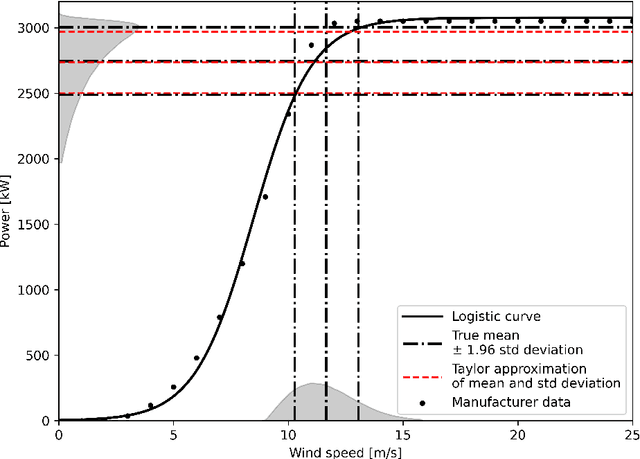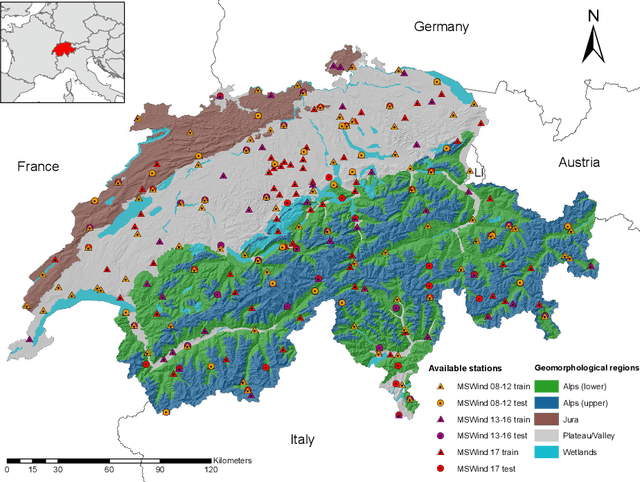Nahid Mohajeri
Spatio-temporal estimation of wind speed and wind power using machine learning: predictions, uncertainty and technical potential
Jul 29, 2021



Abstract:The growth of wind generation capacities in the past decades has shown that wind energy can contribute to the energy transition in many parts of the world. Being highly variable and complex to model, the quantification of the spatio-temporal variation of wind power and the related uncertainty is highly relevant for energy planners. Machine Learning has become a popular tool to perform wind-speed and power predictions. However, the existing approaches have several limitations. These include (i) insufficient consideration of spatio-temporal correlations in wind-speed data, (ii) a lack of existing methodologies to quantify the uncertainty of wind speed prediction and its propagation to the wind-power estimation, and (iii) a focus on less than hourly frequencies. To overcome these limitations, we introduce a framework to reconstruct a spatio-temporal field on a regular grid from irregularly distributed wind-speed measurements. After decomposing data into temporally referenced basis functions and their corresponding spatially distributed coefficients, the latter are spatially modelled using Extreme Learning Machines. Estimates of both model and prediction uncertainties, and of their propagation after the transformation of wind speed into wind power, are then provided without any assumptions on distribution patterns of the data. The methodology is applied to the study of hourly wind power potential on a grid of $250\times 250$ m$^2$ for turbines of 100 meters hub height in Switzerland, generating the first dataset of its type for the country. The potential wind power generation is combined with the available area for wind turbine installations to yield an estimate of the technical potential for wind power in Switzerland. The wind power estimate presented here represents an important input for planners to support the design of future energy systems with increased wind power generation.
 Add to Chrome
Add to Chrome Add to Firefox
Add to Firefox Add to Edge
Add to Edge